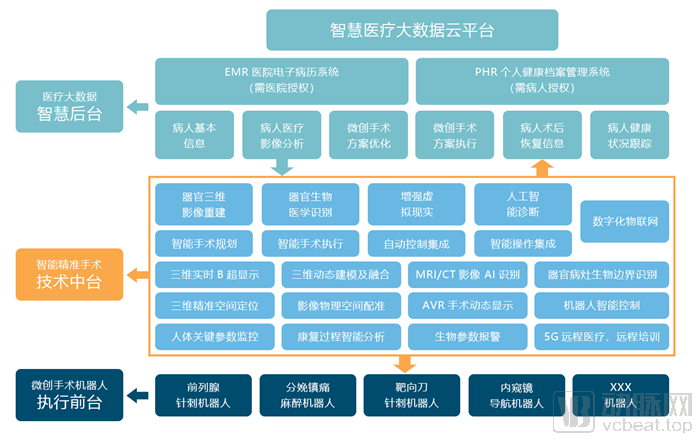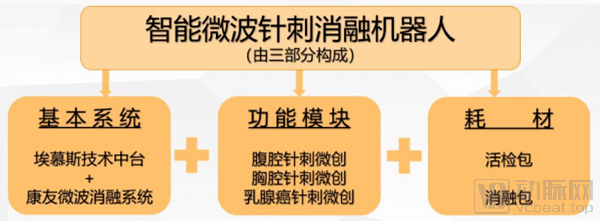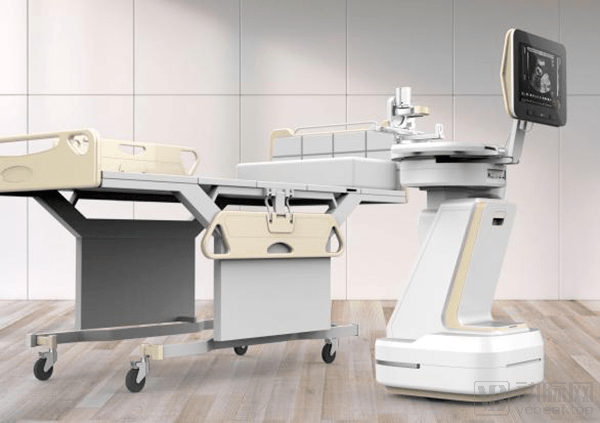Zhongyi Medical: 26 years of honing a single sword, using 3 surgical robots to open up the Chinese market
Release time:
2020-06-09 09:08
Source:
Artery Network
With the rapid development of technology, the advent of surgical robots has brought endless possibilities to clinical practice. It not only addresses pain points such as poor precision, long operation times, and physician fatigue in traditional surgical procedures, but also provides patients with a better medical experience, significantly reducing the suffering caused by surgery.
Industry insiders point out that surgical robots are one of the hottest areas in the medical device industry. According to PwC consulting data, the global surgical robot market size was approximately US$3.5-4 billion in 2016. Based on internal and external environmental analysis, the global surgical robot market is estimated to maintain a compound annual growth rate of approximately 11%. It is predicted that by 2020, the global surgical robot market can achieve a size exceeding US$5.8 billion.
Augment Intelligent Medical System (China) Co., Ltd. (hereinafter referred to as "Zhongyi Medical") was established in Nanjing, Jiangsu in 2018, planning to use three minimally invasive surgical robots to develop the Chinese market.
Core Team - Over 20 Years of Research in Surgical Robots
Li Deli, the founder of Zhongyi Medical, studied at the School of Aerospace Engineering, Xi'an Jiaotong University, and later pursued a doctorate in theoretical physics-quantum mechanics at the University of Hong Kong.
In 1992, while attending a conference in Singapore, Li Deli learned that Singapore had begun attracting global elites to build a "smart healthcare" Asia-Pacific center. Therefore, Li Deli, who was already very optimistic about the prospects of the smart healthcare field, immigrated to Singapore in 1993 after obtaining his doctorate, forgoing the opportunity to further his studies in the United States, and began researching surgical robots.
In 1999, after accumulating experience in the research and development of various smart medical technologies, Li Deli led the core team members to establish Infobuz Pte Ltd, and completed the R&D of more than 20 intelligent medical robots. In 2011, in order to achieve the industrialization of medical robots, Infobuz Pte Ltd merged with several related teams in Singapore through collaboration with AGT Group, establishing AmaKris (AIMS) Company.
AmaKris integrated the research achievements of many well-known research institutions in Singapore and Europe in the fields of smart healthcare and surgical robots for nearly 20 years, providing effective and safe medical solutions for hospitals, doctors, and patients. In 2018, in order to expand the Chinese market and accelerate product landing, Li Deli, as the team leader, established Augment Intelligent Medical System (China) Co., Ltd. in Nanjing.
Zhongyi Medical's core business involves multiple fields, including intelligent robots, artificial intelligence, biomedicine, and medical image processing. In its early stages, relying on the AmaKris technical team, Zhongyi Medical has completed the industrial development of several medical robots and is preparing to launch four products in the Chinese market: a smart medical robot technology platform, a minimally invasive prostate surgery robot, a smart childbirth analgesia robot, and a microwave ablation robot.
Technology Platform - Fundamentally Changing the R&D Process of Smart Healthcare
Surgical robots belong to high-end medical devices, with high difficulty in obtaining core technologies, long product R&D cycles, and high requirements for product performance and safety.
Its research and development requires the combination of core technologies and practical experience from multiple fields, including robotics technology, computer network control technology, digital image processing technology, virtual reality technology, and medical surgical technology. It also needs to focus on the cross-disciplinary integration of ergonomics, mechanical design, software control, and dynamics. Any link will affect its safety, applicability, treatment effect, or treatment cost. In addition, equipment safety monitoring, medical industry regulations, and strict market access supervision have also resulted in a long commercialization cycle and high R&D costs for surgical robots.
Currently, the R&D process of most surgical robots on the market is based on determining technical solutions and system functions according to surgical purposes. System functions rely on technologies and practical experience from multiple fields, requiring lengthy research and substantial capital investment to achieve results. Any mistake in any link may significantly extend the R&D cycle or even lead to R&D failure.
Based on more than 20 years of technology accumulation and the experience gained from developing more than 20 medical robots, Zhongyi Medical has developed an intelligent medical robot "technology platform".

(Image provided by Zhongyi Zhichuang)

(Image provided by Zhongyi Medical)
Dr. Li Deli introduced to Arterial Network: "Just like most mobile phones today, the operating system is universal. After manufacturers determine the most reasonable hardware design, they can directly install the ready-made system without having to do most of the software-related R&D work themselves. The technology platform plays the role of this 'system' in the R&D process of medical robots."
The technology platform fundamentally changes the R&D process of smart healthcare products. Only by designing functional modules that clearly specify which technologies need to be used based on surgical purposes can the R&D of a surgical robot be completed. This greatly shortens the R&D cycle, reduces R&D costs, and also solves the problem of a shortage of multi-disciplinary talents.
3 Surgical Robots - Arming Doctors' "Eyes, Brains, and Hands" with Technology
Minimally Invasive Prostate Surgery Robot
Prostate cancer is already the second fastest-growing type of cancer in China, and it is one of the most common cancers in men worldwide, seriously affecting men's health. However, another fact is that if detected and treated early, the 5-year relative survival rate for patients with localized prostate cancer (tumor confined to the prostate) or prostate cancer with only regional spread can reach 100%.
The minimally invasive prostate surgery robot developed and manufactured by Zhongyi Medical can assist doctors in completing the processes of precise diagnosis, minimally invasive local treatment, and post-operative dynamic monitoring.
The minimally invasive prostate surgery robot precisely registers the patient's lesion information obtained from modern medical imaging technology with the robot's built-in three-dimensional ultrasound imaging real-time navigation system, combined with the results of routine tests and blood PSA tests. This not only increases the one-time diagnostic confirmation rate to over 90% but also accurately locates the lesion position and boundaries, achieving precise diagnosis. The fully digital precise diagnostic process solves the current pain point where minimally invasive local treatment cannot perform multi-point precise positioning of lesion areas, leading to the inability to ensure the treatment effect. This lays a solid foundation for promoting minimally invasive local treatment and reducing patient damage.
When using Zhongyi Medical's minimally invasive prostate surgery robot, doctors can choose different methods for minimally invasive local treatment, such as laser heating, microwave ablation, and radiation particles, according to the patient's actual situation.
Compared with traditional prostate cancer resection surgery, the patient damage using the minimally invasive prostate surgery robot is limited to the cancer lesion area and a few puncture wounds, significantly reducing patient suffering. In addition, the treatment cost is only 10%-50% of traditional surgery. More importantly, after the integration and digitalization of the precise diagnosis and minimally invasive local treatment processes, an effective platform is provided for subsequent dynamic monitoring of treatment effects, enabling timely intervention and improving patient health and lifespan.
Microwave Ablation Robot
Microwave ablation is a minimally invasive local treatment method. Its principle is to use a puncture needle to insert into the lesion, conduct radiofrequency microwaves to the needle tip, generate high temperature at the needle tip to destroy the lesion, and achieve the treatment purpose. Microwave ablation technology has a wide range of clinical applications, such as radiofrequency ablation for cardiac arrhythmia in cardiology and microwave ablation for liver cancer in oncology.
Because minimally invasive local treatment methods have the advantages of greatly reducing patient injury, reducing the risk of cancer cell spread after surgery, and saving medical expenses, they will gradually replace the current organ resection treatment methods in the future.
However, current minimally invasive local treatment techniques have three major pain points:
1. Even the most experienced doctors cannot accurately locate multiple points for treatment and accurately judge the treatment effect;
2. It is impossible to determine the boundaries of the lesion and ensure that the treatment is completely completed, and there is a risk of cancer cell spread after surgery;
3. The current minimally invasive local treatment process is not digitized and cannot be dynamically monitored after surgery to ensure the treatment effect.
These three pain points cannot be completely solved by relying on the experience of doctors and require technological means to achieve better treatment effects.
Zhongyi Medical's microwave ablation robot relies on the technology platform mentioned above, combined with Kangyou microwave ablation system and other minimally invasive treatment technologies, to complete minimally invasive local treatment.

(Image provided by Zhongyi Medical)
Intelligent childbirth analgesia robot
The National Health Commission of China proposed in the "Notice on Carrying Out Pilot Work on Childbirth Analgesia" that it is necessary to improve the level of childbirth analgesia technology and the scientific nature of pregnant women's choice of childbirth methods. By implementing childbirth analgesia, the proportion of pregnant women undergoing cesarean section due to inability to tolerate childbirth pain is reduced, the cesarean section rate is gradually reduced, the natural delivery rate is improved, and the health level of pregnant women and newborns is further improved.
In recent years, the popularity rate of childbirth analgesia in developed countries has reached more than 85%, but it is less than 8% in China. In addition, survey results show that China's cesarean section rate is as high as 46.5%, ranking first in the world, far exceeding the upper limit of 15% recommended by the World Health Organization.
One of the main reasons why childbirth analgesia is difficult to promote in China is the shortage of anesthesiologists. It is understood that to achieve the goal of nationwide promotion of childbirth analgesia, it is necessary to address a shortage of 300,000 anesthesiologists.

(Image provided by Zhongyi Medical)
The intelligent childbirth analgesia robot developed and manufactured by Zhongyi Medical can digitize and informatize the entire process of painless childbirth anesthesia, automatically complete accurate input of anesthetics, continuous monitoring of key indicators of pregnant women, and abnormal indicator alarms, reducing the technical requirements for anesthesiologists, and allowing one anesthesiologist to monitor multiple pregnant women at the same time, effectively solving the pain point of insufficient number of anesthesiologists.
Future Development—Relying on its own advantages to promote industry development
The landing of Zhongyi Medical in Nanjing has received strong support from Nanjing Pukou High-tech Zone. In addition to cooperating with the National University of Singapore (Suzhou Research Institute) to establish the "NUS AmaKris Smart Medical Research Center," it has also jointly established the "Nanjing AmaKris Smart Medical Robot Research Institute" with Pukou Science and Technology Innovation Investment Group and established the "Wu Peiheng Academician Workstation" in cooperation with Nanjing University, establishing an integrated smart medical industry base combining production, education, and research.
At the time of the outbreak of the epidemic, Zhongyi Medical quickly transformed AmaKris's hospital logistics robot into an intelligent disinfection robot and planned to put it on the market before July 2020.
Zhongyi Medical believes that with the advent of the 5G era, smart medical care will be the inevitable trend of future medical industry development. This epidemic has allowed everyone to see the advantages and possibilities of robots in the medical industry. Coupled with the fact that most domestic surgical robot companies are still in their infancy, Zhongyi Medical's years of R&D experience has an absolute advantage in the industry.
Dr. Li Deli told Arterial Network in an interview: "Due to the relatively high industry threshold, we believe that surgical robots will be a blue ocean for a long time in the future. This technology platform product can help many start-ups that are still developing products to reduce R&D time and cost. We hope to use this method to accelerate the development of the industry."
(Original text:Arterial Network)
Next Page
Related News



